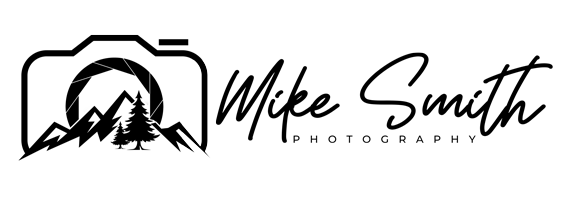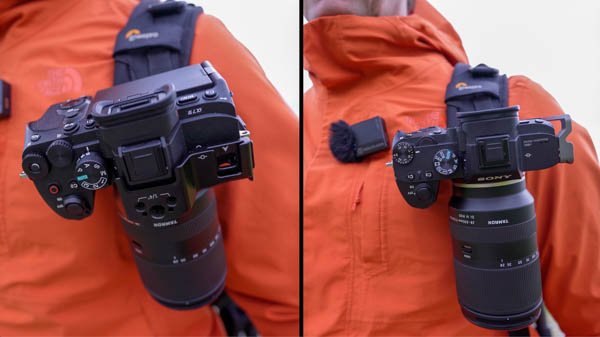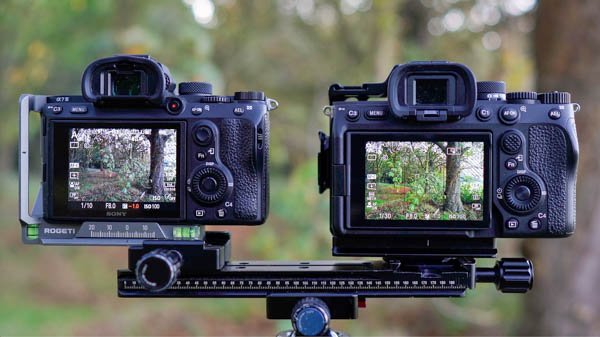A7iii Vs a7iv is it worth the upgrade? (For Landscape Photography)
Buying a new camera can be an arduous process. I have owned Panasonics, Canon cameras, Fujifilm and now I mostly use Sony cameras. However, the camera isn’t the thing that makes or breaks you as a photographer, it is the drive and determination to understand what a good photograph is and how you get it.
You can have a 10 year old camera and if you know how to capture a good photograph, this is what you will get, however there is also a part of photography that is very much gear oriented. I love my camera gear very much like the next photographer, and I love to upgrade my kit. So earlier in the year, I got the Sony A7iv as an upgrade from my A7iii, but was it worth it or did I waste a load of money that I could have spent on better lenses instead … and this is from the point of view of a landscape photographer, not a general photographer, or from other genres.
To cut to the chase, if you are a wildlife photographer, a sports photographer, or your a hobbyist and take photographs of your kids, or fast moving subjects, it is well worth getting. The upgrade when it comes to focussing is so good and when you click on the subject with focus tracking, it sticks like glue!
However if you are a landscape photographer, then the margins are much narrower. If you want to watch me talk about this, click on the video above, but if you are more of a reader, this article is for you.
Now this is highly unscientific, it is more of a user experience … if you want to go into the nitty gritty of it, I highly recommend the Gerald Undone review of the Sony A7iv, where he goes into a lot of detail about the exact changes and upgrades.
Here’s the link for the images I took throughout this video.
A7iv - Noteable Upgrades for Landscape Photography
In a nutshell, it has gone from 24Mp to 33Mp, the focussing is better, the body feels better, and the colour science has changed again …
Oh Sony, you really need to lock in your colour science and stick to it … I basically have three different cameras that have three different variations of colour … if I take this photo with the A7C, the A7iii and the A7iv, all in the same setting, they all look slightly different as a jpeg… and this is because of that colour science …
I don’t worry too much about this for landscapes, as I develop the tones and the colours when editing and even when I used to shoot portraits and corporate shoots, I’d just make sure the white balance was right and shot in RAW and it came out just great with a bit of tweaking in the editing process.
If you are interested in how I get the colours in my photos, I do have a preset pack available, click here to learn more.
What I like about the A7iv
Flippy Screen
The flippy screen is great for those high up and low down shots where with a fixed screen or the old A7iii tilty screen you would have to either guess your framing or lie on the floor. It does have its downsides as well but well get to those in a bit.
EVF
The EVF is better than in the A7iii and it helps when you are trying to see where the focus is currently at, or when you need to see if the shot you have just taken is in focus.
Body Shape
I have quite big hands, and so the new body shape is a little bigger and a little better. It’s bulky and sturdy … almost as if the A7iii went to the gym, got a personal trainer and bulked out a little … not steroid induced bulk, just healthy eating and working out bulk.
Megapixels
Having a higher megapixel camera is generally better. You con zoom in more when editing, you can change the crop of the image without losing detail, and it generally helps you when you are trying to make the photograph better than what you might have got in camera. However, I found that it wasn’t that much of a jump, from 24Mp to 33Mp. It is a step in the right direction, but if you are after more megapixels for your landscape photographs, the A7riii would be a much better option with 42Mp … and if you have deep pockets, the A7riv would be even better at 61Mp … although then you would probably have to upgrade your computer to handle such big files as well.
Focussing
The Focussing system is so much better than the A7iii. It tracks the subject, it is sticky like glue and just doesn’t want to lose the point it is focussed on … if your subject stands out enough, it will stay stuck to them, and then if the subject goes out of the frame and then comes back into the frame, most of the time it will once again focus on that very subject.
Great for photographing wildlife and sports … and also maybe your family doing activities, but for landscapes, not very useful. Landscapes tend to be very static and so this is not that much of a help.
If I was to take a photograph with the A7iii and the A7iv, I could easily get the same result.
Here are a couple of low res examples from the couple of days out with both cameras side by side. If you want to see the originals for yourself, you can download then by clicking here.
What I don’t like about the A7iv
The Menu
The menu is something that I really haven’t warmed to. It is a bit better in the organisation, but in general, it is like getting used to a whole new menu system.
The one great thing with the Sony cameras is that there are lots of customisable buttons, there is the Fn menu and also the my menu, so lots of places to keep the options you want to access a lot of the time.
I just have the sense of dread when I need to find something in the menu that I have not assigned to the custom menu.
Also, because it is vertical over the older horizontal menu system, it feels like there is another level to it. It just seems a little bit more clunky than the older menu … however, I have had 7 years of using the old menu whereas I have only had about 6 months of using the new menu.
The Flippy Screen
On one hand, I love the flippy screen for the versatility of getting high up or lowdown shots, however, when you have it flipped out, it makes the camera a bit wider. So no flipping the screen up like with the A7iii, you have to flip it out and then up.
Also, when it comes to L brackets, it just gets in the way.
L-Brackets and the A7iv
L-brackets just don’t work well with a flippy screen. A lot of people have commented on this on my video linked above, but they really just don’t work. You can move them forwards, you can move them to the side, they also make ones with a cut out in them to slot the flippy screen in when it is at 90 degrees to the camera, but the whole idea of a flippy screen is for it to be free and easy to use. With an L-bracket, they just get in the way of each other.
So if you are an L-bracket user, it is something you will have to come to terms with if you are intending on upgrading to any camera with a flippy screen.
I do have a bit of a workaround, where I have taken a Small-Rig half cage and then put a Peak Design quick release plate on the side for the vertical camera position. This gives me 99.9% of the range of movement of the flippy screen and it still does the job of an L-bracket.
In the video, I mistakenly said the screen hasn’t been upgraded at all … it has, but by a very small amount … it is basically still rubbish.
My Canon 6D from 10 years ago still has better resolution than this brand new 2022 camera, which is ridiculous. This should have definitely been upgraded.
Conclusion
When I am out shooting landscapes, part of me is loving this camera, the new feel of it and just the happiness I get from using a new bit of kit is awesome … but it really isn’t that much different to the A7iii.
For landscape photography, it is a case of working out what you are going to shoot, framing it up, and then getting good focus. If the light is good and the composition is good, it will work as a landscape photograph …. so this updated focussing system isn’t really worth it for static landscapes … however if you are a hobbyist and also use your camera to photograph your family, sporting events, and parties, then that focussing system will really help and this is where this camera comes into its own.
So to sum it all up, if you use your camera for lots of different things, and you are happy with the lenses you have, this is a worthy upgrade, especially if you do photograph a lot of fast moving things, like birds, sports cars, your kids running around the place or groups of people.
If you are a hybrid shooter and do a lot of videography as well as photography, again it is a great upgrade and will help get good video as well as stills …
However if you are solely a landscape photographer, then I don’t really think it is that big an upgrade and this is where I think I might have spent this money in the wrong place … I probably should have invested in lenses instead … but I do need this as a backup video camera so I’ve had to compromise … and being in a marriage, I’ve learnt all about compromise …
If you are solely a landscape shooter, you’d be better off spending the money on better lenses, or on an epic photography trip or a course where you will learn so much more about photography …
From a videography perspective, I really am happy with the upgrade, but from a landscape photography perspective, it is a bit of a let down …
Thanks
Mike Smith
P.s. If you like my videos and Articles on photography, and are interested in a better understanding of your camera, photography and shooting landscapes, I now do 1-2-1 workshops, both online and in person in the UK. Click here to find out more.









